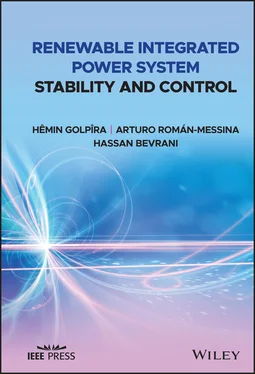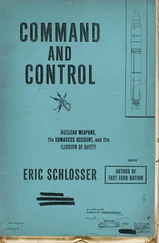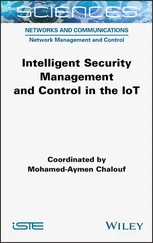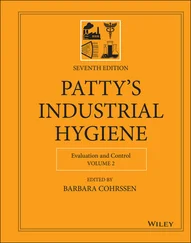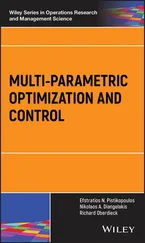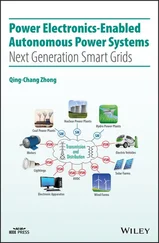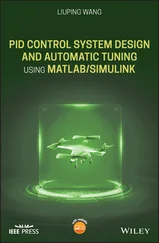The term power system stability and control is used to define the application of control theorems and relevant technologies to analyze and enhance the power system functions during normal and abnormal operations. Power system stability and control refers to keep desired performance and stabilizing power system following various disturbances, such as short circuits, loss of generation, and load.
The capacity of installed inverter‐based distributed generators (DGs) and renewable energy sources (RESs) individually or through the microgrids (MGs) in power systems is rapidly growing, and a high penetration level is targeted for the next few decades. In most countries including developing countries, significant targets are considered for using the distributed microsources and MGs in their power systems for near future. The increase of DGs/RESs in power systems has a significant impact on CO 2reduction; however, recent studies have shown that relatively high DGs/RESs integration will have some negative impacts on power system dynamics, frequency and voltage regulation, as well as other control and operational issues. Decreasing system inertia and highly variable dynamic nature of DGs/RESs/MGs are known as the main reasons. These impacts may increase for the dynamically weak power systems at the penetration rates that are expected over the next several years.
In this chapter, a brief discussion on the power system stability and control in modern renewable integrated power systems and the current state of this topic are given. Data‐driven wide‐area power system monitoring and control is emphasized, and the significance of measurement‐based dynamic modeling and parameter estimation is shown.
1.1 Power System Stability and Control
Power system stability and control was first recognized as an important problem in 1920s [1]. Over the years, numerous modeling/simulation programs, synthesis/analysis methodologies, and protection schemes have been developed. Power grid control must provide the ability of an electric power to regain a state of operating equilibrium after being subjected to a physical disturbance, with most system variables, i.e., frequency, voltage, and angle, bounded so that practically the entire system remains intact. Thus, the main control loops are known as frequency control, voltage control, and rotor angle (power oscillation damping) control [2].
In many power systems, advanced measurement devices such as phasor measurement units (PMUs) and modern communication devices are already being installed. Using these facilities, the parameters of existing power system controllers can be adjusted by an online data‐driven control mechanism [3]. The PMU data after filtering are used to estimate some important parameters in the system (scheduling parameters). These parameters are then used in the control tuning algorithm that will adapt the controller parameters in frequency control, voltage control, and power oscillation control. Therefore, the controller's parameters are adapted according to the current status of the system.
One of the important steps of reliable and performant control system design is defining the performance specifications. It depends on the features of the controller design method, the constraints on the controller structure, the achievable performance that is limited by the physical constraints, the industrial standards on the limit of the variables, the limits of the actuators, etc. Finding the control specifications and making them compatible with the controller design approach require a deeper understanding of the physical system to be controlled.
The characteristics of three main control loops, i.e., frequency control, voltage control, and angle control, should be studied to enable the definition of achievable performance specifications and designing an effective control system.
Frequency control: Since the frequency generated in an electric network is proportional to the rotation speed of the generator, the problem of frequency control may be directly translated into a speed control problem of the turbine generator unit. This is initially overcome by adding a governing mechanism that senses the machine speed and adjusts the input valve to change the mechanical power output to track the load change and to restore frequency to nominal value. Depending on the frequency deviation range, different frequency control loops, i.e., primary, secondary, and tertiary, may be required to maintain power system frequency stability [4].The secondary frequency control which is also known as load frequency control (LFC) initializes a centralized and automatic control task using the assigned spinning reserve. The LFC is the main component of an automatic generation control (AGC) system [5]. In large power systems, this control loop is activated in the time frame of few seconds to minutes after a disturbance. In a modern AGC system, based on the received area control error (ACE) signal, an online tuning algorithm must adjust the LFC parameters to restore the frequency and tie‐line powers to the specified values.
Voltage control: The generators are usually operated at a constant voltage by using an automatic voltage regulator (AVR) which controls the excitation of the machine via the electric field exciter system. The exciter system supplies the field winding of the synchronous machine with direct current to generate required flux in the rotor. A system enters a state of voltage instability when a disturbance changes the system condition to make a progressive fall or rise of voltages of some buses. Loss of load in an area, tripping transmission lines, and other protected equipment are possible results of voltage instability. Like frequency control, the voltage control is also characterized via several control loops in different system levels. The AVR loop which regulated the voltage of generator terminals is located on lower system levels and responds typically in a time scale of a second or less.
Angle control: Rotor angle stability is the ability of the power system to maintain synchronization after being subjected to a disturbance. Angle stability refers to damping of power oscillations inside subsystems and between subsystems on an interconnected grid during variation beyond specified threshold levels. The risk of losing angle stability can be significantly reduced by using proper control devices inserted into the power grid to find a smooth shape for the system dynamic response.The power oscillation damping has been mainly guaranteed by power system stabilizers (PSSs). A PSS is a controller, which, beside the turbine‐governing system, performs an additional supplementary control loop to the AVR system of a generating unit. Depending on the type of PSS, the input signal could be the rotor speed/frequency deviation, the generator active power deviation, or a combination feedback of rotor speed/frequency and active power changes. This signal to be passed through a combination of a lead‐lag compensators. The PSS output signal is amplified to provide an effective output signal.In order to damp the inter‐area oscillations, which have smaller oscillation frequency than the local oscillatory modes, a wide‐area control (WAC) system is required. The WAC system is a centralized controller that uses the PMU signals and produces auxiliary control signals for the PSSs.
Virtual synchronous generator: Additional flexibility may be required from various control levels so that the system operator can continue to balance supply and demand on the modern power grids in the presence of DGs/RESs/MGs. The contribution of DGs/RESs in regulation task refers to the ability of these grids to regulate their power output, by an appropriate control action. This can be regarded as adding virtual inertia to the grid and considered as a solution. Virtual inertia emulation requires the inverter to be able to store or release an amount of energy depending on the grid frequency's deviation from its nominal value, analogous to the inertia of a conventional generator. This setup, which is known as virtual synchronous generator (VSG), will then operate to emulate desirable dynamics, such as inertia and damping properties, by flexible shaping of its output active and reactive powers as conceptually shown in Figure 1.1.
Читать дальше
